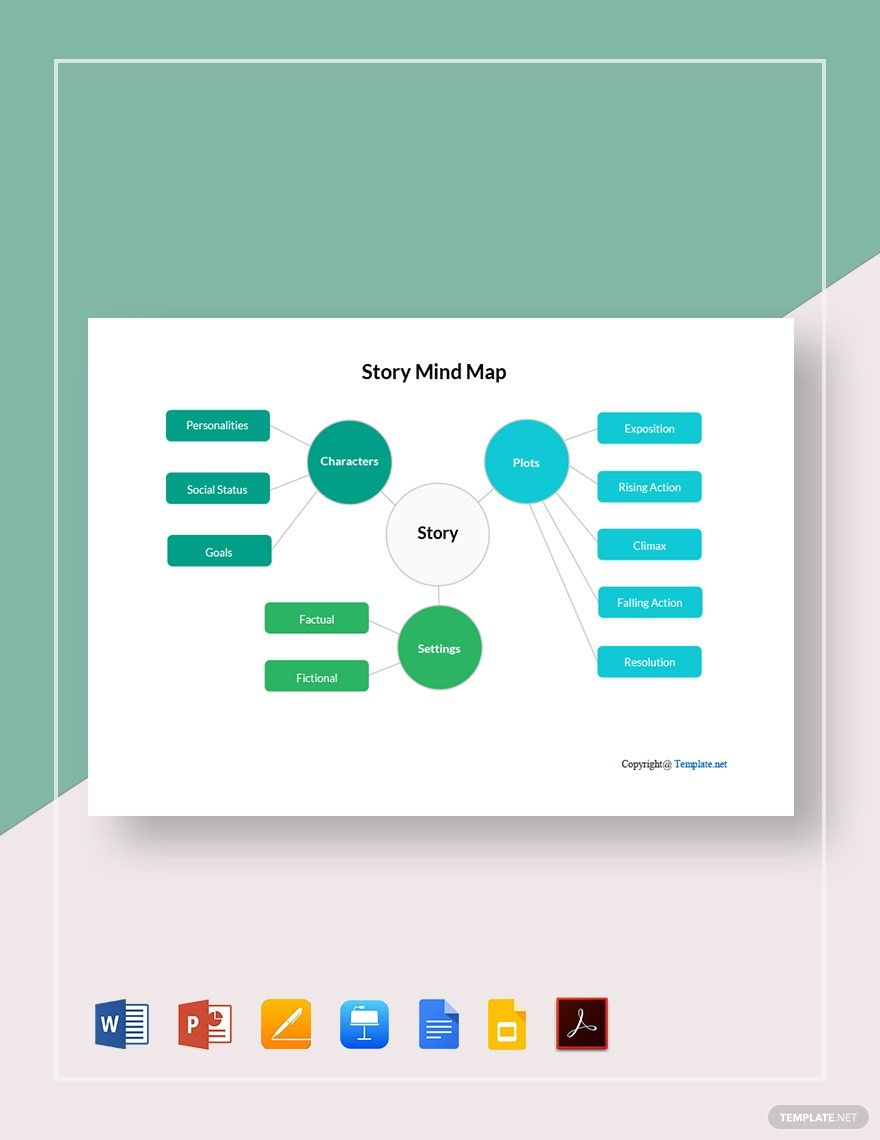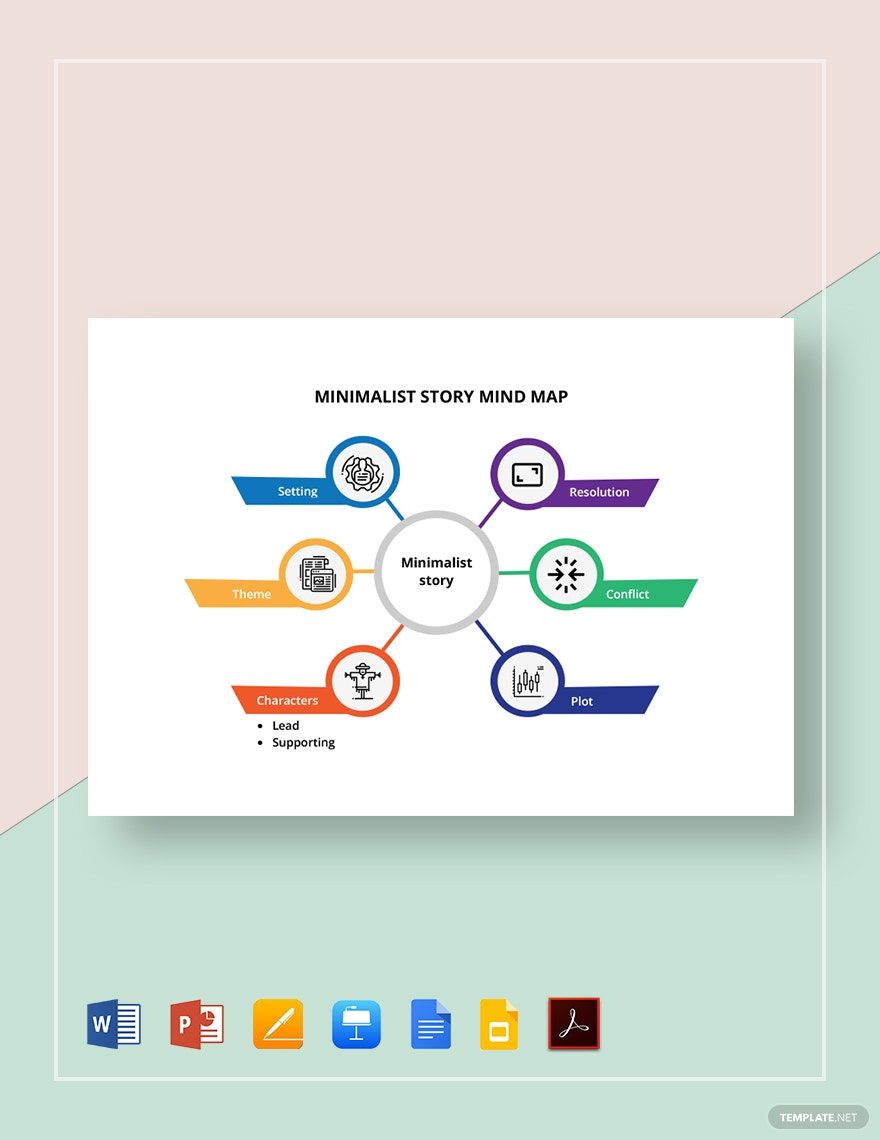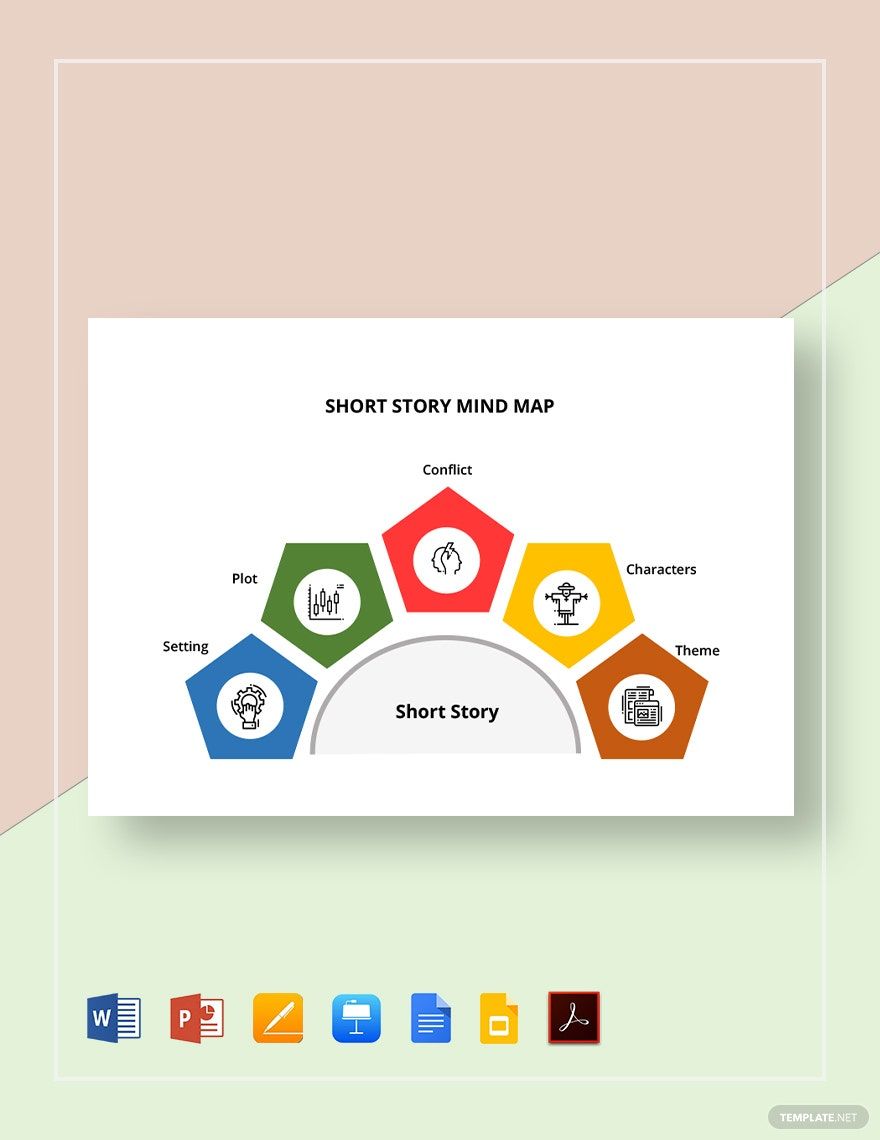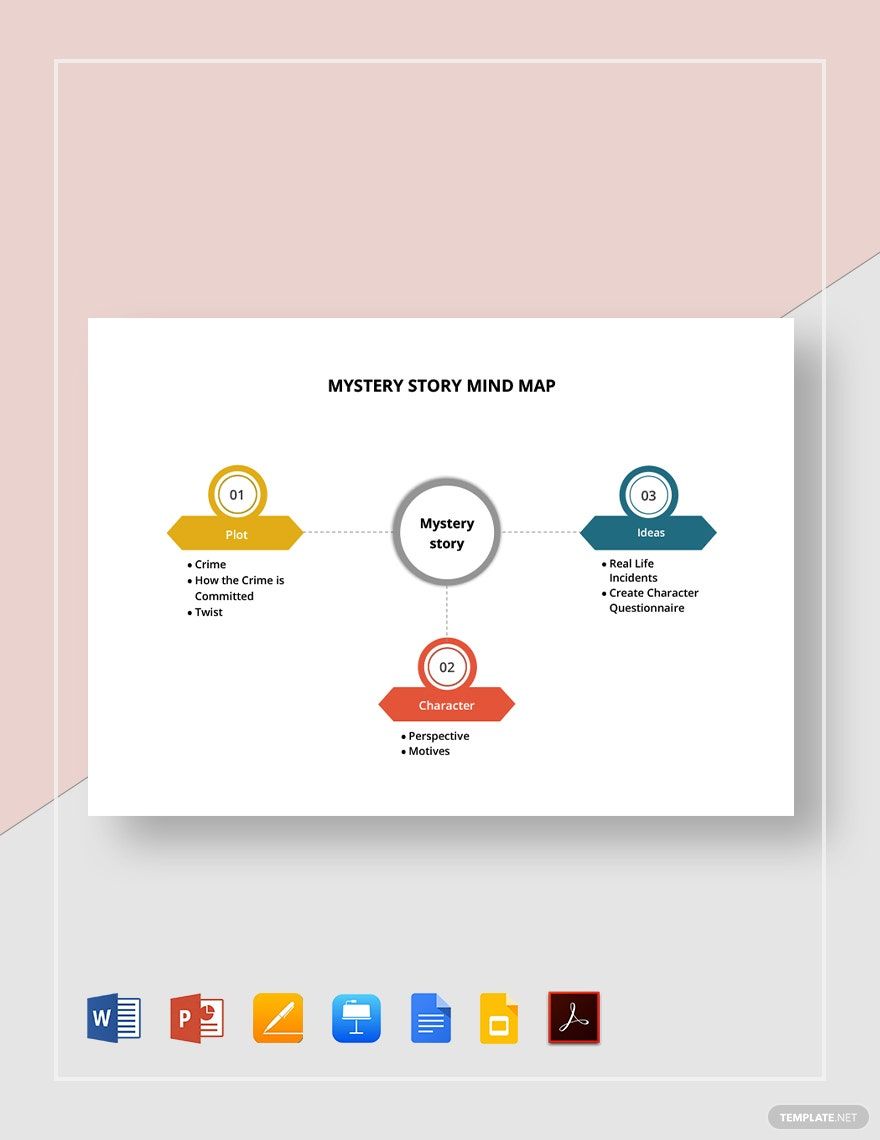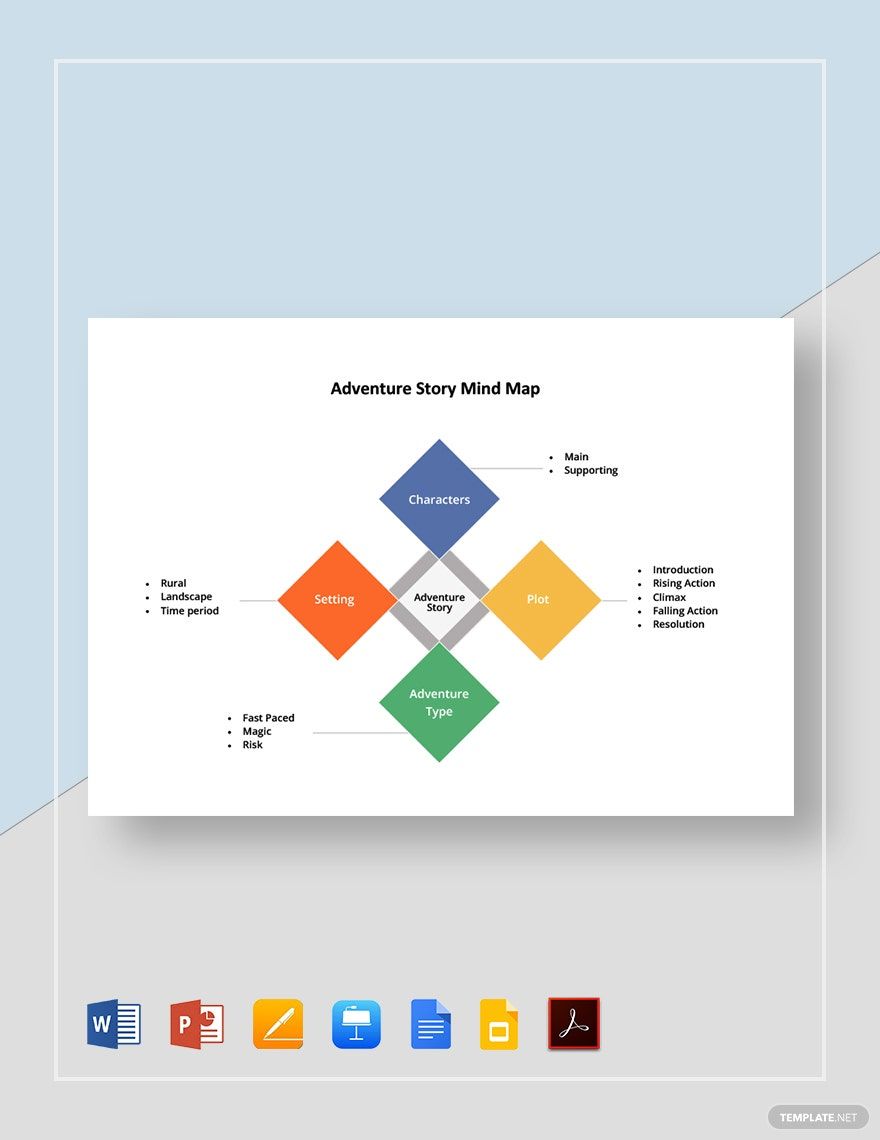Whether you are mapping a 5th-grade adventure short story, outlining a novel, or simplifying a book, having a concept or story map is an essential tool to streamline complex ideas. To assist you, freely check out our various collections of Ready-Made Story Mind Map Templates in Apple Keynote! These professionally designed templates are all 100% customizable and easily editable in using any device such as your phone or tablet anytime, anywhere! What else are you looking for? Structure your story ideas and thoughts by downloading this template now!
Story Mindmap Template in Apple Keynote, Imac
Achieve an Effective Adventure Story by Visualizing Ideas Using Template.net's Free Story Mind Map Apple Keynote Templates. We Not Only Provide Premade Documents But Quality Content as Well. Achieve Your Goals and Add Details Efficiently. Get a Fully-Functional Story Mind Map in Several Editable and Customizable Designs and Use for Your Keynote Presentation without Hassle!
How to Create a Story Mind Map in Apple Keynote
Storytelling is considered as one of the most influential approaches that leaders, bloggers, writers, and artists do to impact, educate, and inspire others. It brings people together to share different ideas and learn from one another. To make the process easier, forming strategies to deliver a more detailed and logical story is a smart idea. Here, we have outlined practical tips to help you create an informative diagram in the form of a story mind map.
1. Present the Main Idea of the Story
To have a clear-cut start, present the focal point. It is the main idea or title of the story, book, or novel. Along with that, identify what kind of story you need to outline. Is it a mystery, adventure, kids story, etc.? Write the title at the center of the map. Make it more prominent than the other details. That way, it would be easier for you and readers to track down the whole point of the story.
2. Formulate Subtopics
Subtopics are supporting details that strengthen the main theme. Thus, present it clearly. Start adding the subtopics and expand out your ideas. You may have one with multiple variations for your storyline. For instance, you have subtopics about the characters of the story, and another subtopic for every character, and creating subtopics that elaborate each character's traits.
3. Play with Colors
Keep your story map more engaging and appealing! Colors are powerful features you can use. It signifies different ideas and will allow you to distinguish various points of the storyline. To illustrate, you can use red to signify the conflict part of the story or a green to emphasize the setting of the story. Make sure to utilize colors wisely.
4. Experiment with Ready-made Story Mind Map Templates
It takes time and practice to create a winning story mind map. Thus, the best alternative is to experiment with sample mind map templates available online. Above this article, we have suggested winning templates that you can avail of and download immediately.
Frequently Asked Questions
What is Mind Mapping?
Mind Mapping is the process of creating mind maps. It is known as a graphical strategy introduced by Tony Buzan to visualize relationships between the main topic, relevant subtopics, and more. Additionally, it is a dynamic type of visual representation of theories and ideas.
How do I use mind mapping?
You can use mind mapping for the following purposes:
1. Taking notes during a discussion and listening for the most significant points.
2. Presenting connections and relationships between the main concepts in your topic.
3. Brainstorming all the information you already grasp about an essay question.
4. Mapping the initial steps of an essay by visualizing all the perspectives of the question.
5. Building your ideas and information by presenting on a single page.
6. Stimulating creative study and artistic answers to queries.
7. Evaluating learning in preparation for analysis or examination.
What are the basic parts of a mind map?
Here are ten fundamental elements of a mind map:
1. Central topic
2. Main Idea
3. Subtopic
4. Callout topic
5. Floating topic
6. Relationship arrows
7. Boundaries
8. Markers
9. Notes
10. Hyperlinks and attachments
Why is mind mapping useful?
It is an effective visual strategy that you can use to interpret what's in your thought into a visual representation. As mind mapping functions like the brain, it helps you to classify and learn information easily.
What are the advantages of mind mapping?
Mind mapping improves your creativity and competitiveness since it is an extremely useful tool that enables you to develop further ideas, determine connections between the various information and data, and increase memory and retention efficiently.
